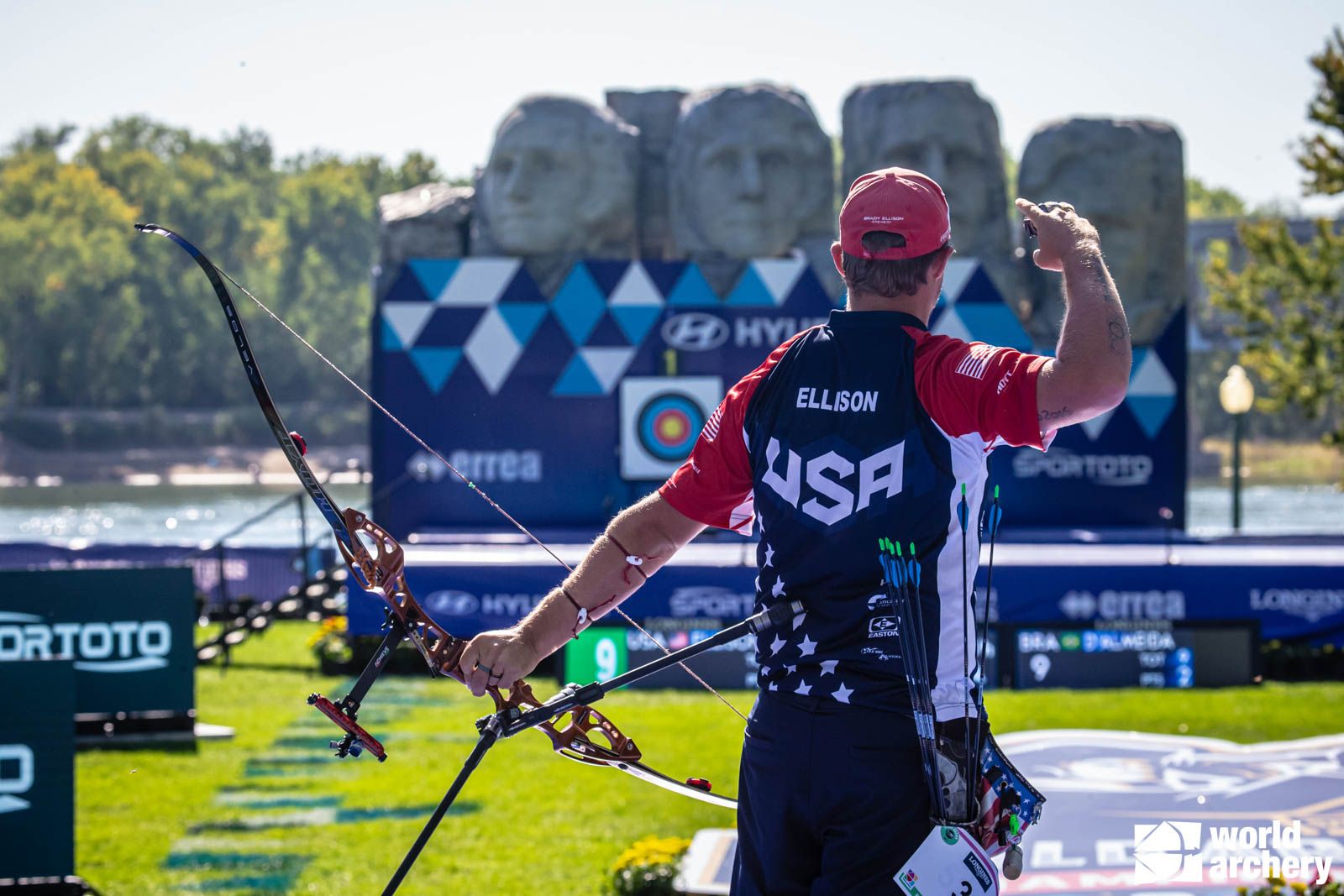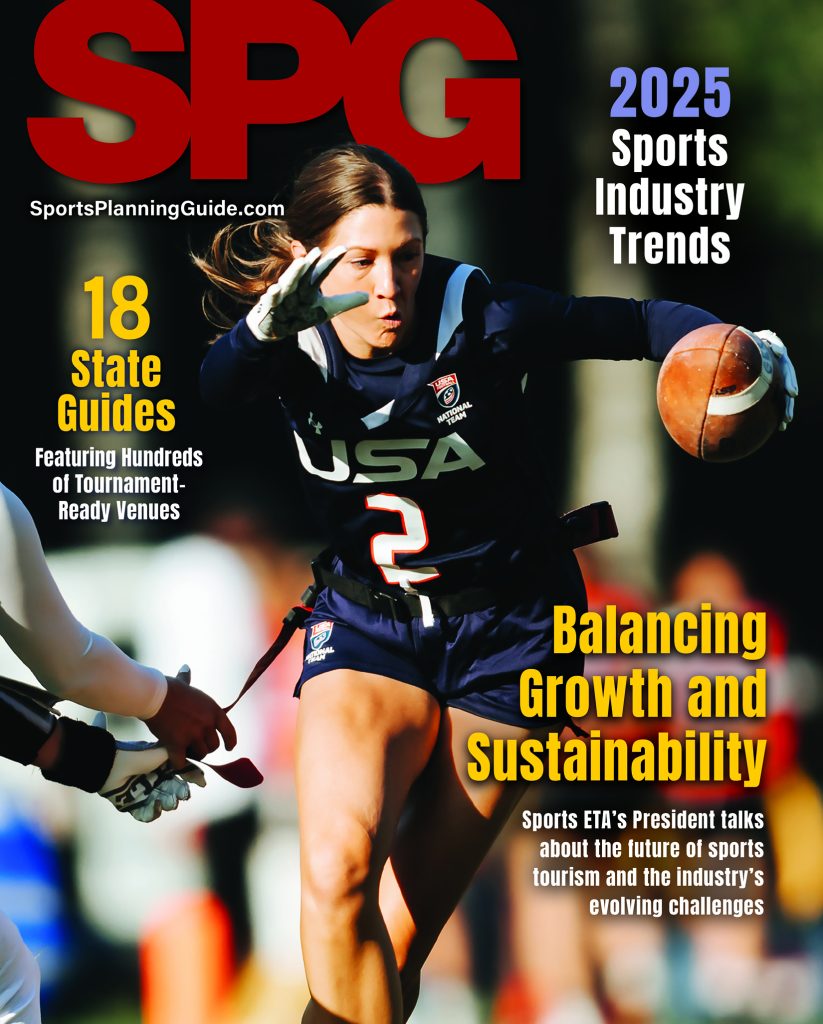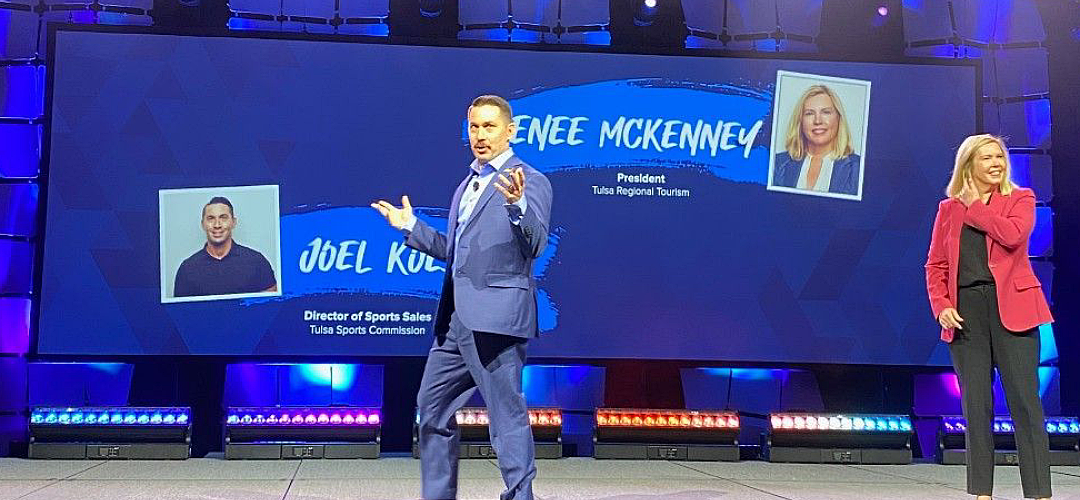Led by NFAA Yankton Easton Archery Center, Smalltown South Dakota Finds Its Global Why
Why?
As one of archery’s biggest advocates, Bruce Cull has long had his sight set on answering that question.
It’s been nearly 15 years since the National Field Archery Association (NFAA) and its counterpart packed up shop to move their headquarter offices from the Golden State to Yankton, SD. Yet Cull still beams about how his little hometown has continually defied the odds, becoming home to the world’s largest archery center along the way.
“I talked to him and said I have an idea—I said we’re thinking of moving our headquarters,” says Cull, recalling when he shared his vision with Jim Easton, former president of World Archery Federation and owner of Easton Sports. “He said, ‘Yankton, SD, is not my ideal location for a training center.’ We had this little building just off of Interstate 10 south of San Bernardino, CA, in a little town called Redlands. It was a double garage with an office and we sold it for $750,000. We built our facility here for $1 million, in which Easton came in with a grant for a quarter of a million to build the range.”
Cull had ‘hopes of doing something but didn’t know it would get to this level,’ culminating in September 2021 when the NFAA Easton Yankton Archery Center (NEYAC) concurrently hosted a trifecta of international archery events— the Hyundai World Archery Championships, World Archery Congress and the Hyundai World Cup Final.
This marked the first time that the three most prestigious archery events were hosted together. In total, the events yielded 80 million broadcast and social viewers, $3.85 million in estimated economic impact, $4.2 million in sponsorship value, 8,000 room nights and visitors from 84 countries—all for Yankton, a town of about 15,000 residents.
“Never has World Archery held these events in a venue that is built for this sport. We could hold the Congress, the tournament, everything all in one of our own (venues),” says Cull, president of the NFAA Foundation and general manager of NEYAC. “And they enjoyed that and felt the ownership of it. I had multiple countries ask me how we did this. That’s the neat part of it, that’s what I’m after—growing the pie, not getting a bigger piece of it.”
Achieving the historic feat of 2021 was a decades-long process, though, that began by convincing the NFAA in 2007 to approve a move to South Dakota. Working alongside Yankton Area Progressive Growth (YAPG), the economic development arm of the city at the time, the city of Yankton provided 40 acres of land to the NFAA in exchange for the Association constructing a headquarter office and small training center, employing three full-time staff and committing to actively pursue the rights to host major events. As the NFAA had been considering a move to a more central U.S. city, South Dakota’s location as the geographic center of all 50 states complemented the state’s low costs to build, making for a deal that Cull says was ‘too good to refuse.’
That same can-do business mindset in Yankton also trickles down to event servicing, which was on full display when the archery world descended on Mount Rushmore State in September.
“The ability we have as a small community and, so importantly, our U.S. state senators came into play big-time to get people into this country during a full-scale pandemic,” Cull says. “We brought visitors from 84 countries into town and pulled the entire event off as good as I’ve ever seen. It took a full-time person on our end and a full-time person on the USOPC (United States Olympic & Paralympic Committee) working directly with all of the Embassies to make that happen.”
But competitors and officials making it onto U.S. soil was just the beginning. When a charter bus company backed out at the last minute due to pandemic-related staffing issues, Yankton residents including bankers, lawyers, mechanics and waitresses stepped up as shuttle drivers to make sure visitors were transported to and from three airports in South Dakota, Nebraska and Iowa.
Late changes to plans and a short four-months’ notice that Yankton would be executing all three events made accounting, balancing and fundraising for a $4-$5 million event budget all the more difficult.
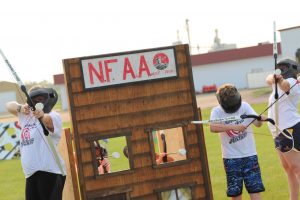
Archery’s popularity continues to grow.
“When we finally got the stamp of approval for all three events, it was May and this was a September event,” Cull says. “We also were faced with the fact that it could be canceled at any time, so we tried move forward but not do anything that we couldn’t back out of or retract.”
By the time September rolled around, six NFAA and NFAA Foundation staff had worked full-time to raise $1 million in sponsorship throughout the tri-state area, nationally and from endemic and nonendemic supporters—from $300 advertisers up to $100,000 sponsors.
“We had people from the whole region who could see the economic benefits jump on board. That’s years worth of establishing yourself, education people and being accountable. We’ve done that with all of our big events,” Cull says. “We’ve polled people so we can show hard numbers. Especially with the year that we were in, when you turn a thousand people loose with meal vouchers for restaurants everybody is going to notice.”
WHERE IDEAS FLOW AND WORK
The City of Yankton website reads “Where Ideas Flow” at the top of the home page, a play on the town’s location on the shores of the Missouri River. Nebraska is located just south across Missouri over the Discovery Bridge, and the state of Iowa is less than one hour to the east.
While the city has leveraged its tri-state proximity to help bring international visitors to NEYAC, Yankton also showcases itself out-of-market thanks to NFAA’s event operations expertise. Cull and his staff head to Las Vegas annually to produce the acclaimed and NFAA Foundation-owned Vegas Shoot, which is billed as the largest and most prestigious indoor archery event in the world. And it’s common for the Association staff to travel with familiar faces from back home.
Nancy Wenande serves as chief executive officer of Yankton Thrive, the city’s recently rebranded economic development arm after a recent merger between the Yankton Area Chamber of Commerce and YAPG. New to the Yankton Thrive role, Wenande has long worked and lived in Yankton where she owned a convenience store for 13 years before serving as city commissioner for nine years and mayor from 2012-14. After leaving office, she joined the NFAA Foundation in event operations.
“Yankton as a community is heavily invested in what archery does in our own community, as well as what the NFAA does to represent archery around the world. The City of Yankton, through Yankton Thrive, comes out to Vegas to support the NFAA Foundation each year,” Wenande says. “We have a booth to promote all the activities in Yankton and encourage people to come to the tournaments. And we also have discussions with companies that may be looking to locate to Yankton.”
Some of the city’s business-friendly benefits that Wenande highlights include a strong school district with free pre-school, no corporate tax and no income tax. Yankton Thrive’s goals is to help all businesses flourish, touching on many areas including housing, workforce, talent recruitment, agriculture, health care and tourism.
The last segment is perhaps best embodied by the NFAA project. Since the headquarters dedication and official opening in June 2009, the facility has made many additions including the world’s only indoor 90-meter range, two outdoor field ranges of Olympic proportions, three permanent field ranges, a 3D range, a 24,000 square foot indoor addition, and an adjacent Yankton/Missouri River KOA Journey campground.
“A few years after we built this, Jim Easton’s son, Greg, saw what we were doing and the Easton Foundation came through with an addition of helping us add the world’s first 90-meter range,” Cull says. “That’s 100 yards, a city block indoors, that we debuted in 2012. Prior to the London Olympics, the U.S. Paralympic Team trained here, which was the first time it was used.”
Expansions in programming and events followed and in 2015 Yankton tested its global tournament chops by hosting the World Archery Youth World Championships. After a competitive bid process that came down to Yankton and Mexico City as finalists, World Archery selected the NFAA headquarters for what Cull still cites as the toughest logistical event to date because of the unique challenges that accompany having to bring 500 international youth into the U.S. and Yankton community.
“I firmly believe we got that event because of our facility number one, but second was our smaller community and safer atmosphere,” Cull says. “When you come to Yankton and say you’re from World Archery, you’re embraced. If you go into a city of 30 million, you’re lost in the shuffle, you’re just part of the everyday routine. That still proves true today.”
On the heels of a successful 2015 World Youth Championships, Cull set his sights on the 2018 World Indoor Championships, but the facility needed more than 90 meters of indoor space.
“We were borderline big enough to be able to host World Indoors, so we quickly went into brick-and-mortar mode to figure out a way to duplicate another building the size of ours,” Cull says “We really needed about another 25,000 square feet to host the five-day World Indoors. We worked with the community and state and erected a million-and-a-half-dollar facility that is attached to our building, which doubled our range area and big event space.”
The addition, which took nine months to complete and opened one month before the 2018 World Indoors, was built as a convertible four-court tennis facility to also serve local recreational needs. Now known as the NEYAC Community Center, the venue features the flexibility to transition quickly from five days of international archery competition to a firearm event and expo.
With a pandemic unknowingly looming, Yankton would showcase its adaptability once again when it had to postpone the 2020 World Field Archery Championships for two years. Cull and the NFAA kept pushing ahead, though, bidding for and winning the rights to host the 2021 Hyundai World Archery Championships. Thereafter, the team bid for and added the World Archery Congress to the 2021 Yankton program before the 2020 Tokyo Olympics were postponed—planting seeds of doubt that led to the Federation questioning whether it should host any events.
“World Archery questioned whether they should have the events, but they knew in our state you could. They knew with the staff we have that, if anything could happen, we could do it,” Cull says. “Then, they approached us about the (2021 Hyundai Archery) World Cup Final. Because the venues were the same and all of the experts from World Archery are the same, they asked if we could do all of the events together. I had to think about it for a bit because that’s over a two-week event.”
Questions turned quickly into answers again in Yankton, though, forever changing the course of archery history.
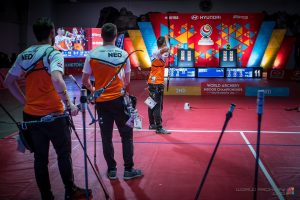
Before the NFAA, which was founded in 1939, moved to Yankton, archery was known locally by primarily hunting enthusiasts.
CHAMPION YOUR FUTURE
With the Yankton 2022 World Archery Field Championships slated for October 3-9, Cull, the NFAA and Wenande are busy planning what’s next for the community. After the Field Championships in October, the only major international archery event left on the Yankton host committee bucket list is the World Archery 3D Championships, which the team expects to host by 2025.
“It’s having a champion like Bruce Cull is what made this happen. He wasn’t somebody who was going to back away,” says Wenande of Yankton’s archery prowess. “His personality sometimes turns people off because he is so passionate about what he believes in and how he knows we can get there. That’s his entrepreneurial mind and spirit, it’s just that some people can’t move as fast as him.”
A healthy mix of persistence and creativity helps Cull move big projects forward, as demonstrated by a 2013 construction partnership with the South Dakota National Guard. As part of its annual summer camp, the Guard agreed to expand its training program from the Black Hills to include Yankton for the construction of three NFAA field ranges and one outdoor target range.
“The local TV station interviewed a 35-year guy who had done a couple of tours in Iraq and a 19-year Native American woman fresh out of training,” says Cull, recalling two Guard members who worked the NFAA project. “Both of them were running one of the big scrapers to dig up the ground—so they got practical experience, but they came here and helped us completely engineer and build our Olympic fields and field ranges. The real punch line was when she said, ‘I feel like we’ve done something because we normally go dig a hole and fill it back up. But the project here actually helped people.’”
The National Guard’s archery work eventually led to another favor for Yankton in 2021 when developers of the Lewis & Clark Soccer Complex tapped the archery blueprint. When approached by project officials and the Yankton Youth Soccer Association (YYSA), Cull introduced the plan to the Guard which since signed on for some of the complex’s field work. As Cull says, ‘we’ve come in with a bit of not only sports tourism, but a real noticeable economic development end.’
Beyond the soccer pitch, Wenande is also excited about the 100,000 square foot, 200-meter indoor track at the Ruth Donohoe First Dakota Fieldhouse that opened in late 2020 on the Mount Marty University campus, as well as the success of a local para badminton player who is on the cusp of an Olympic appearance. Both developments provide even more fuel for tourism event opportunities for Yankton to pursue.
“It sets the example that there is no impossible,” Wenande says of archery’s influence on community development. “If we decide that we want to accomplish something we can pull together as a region and as a state to make the big things happen.”
Before the NFAA, which was founded in 1939, moved to Yankton, archery was known locally by primarily hunting enthusiasts who frequented Cull’s shop, Dakota Archery & Outdoor Sports.
“That is where you went to pick up the supplies you needed and order your equipment. There was not a big target archery industry or club in the community, so archery was a hunting sport for most people,” says Wenande. “People didn’t look at it from a competitive standpoint. It really changed the whole perspective of the community and region of what archery means to South Dakota.”
According to Cull, the 2021 World events trio is the ‘biggest feather in the cap‘ to date for NEYAC. But the next big thing may be sitting on 18 acres of land next to South Dakota Highway 50, Yankton KOA and, unsurprisingly, the NFAA campus. While Wenande says the economic development department is still busy locating the right company to build on the site, it is ‘really well suited for somebody in the hunting, firearms or archery industry.’
“It was not uncommon for people in the community to say that’s a crazy idea, it’s never going to work, why would they come to Yankton,” Wenande says. “We still get that question all the time, ‘why Yankton?’ It’s fun to sit and tell the story of how it all came together. It really was a vision, and I think Bruce’s vision is still not complete. There is more he wants to do, more he wants to bring to Yankton.”
And why not?
By Nick Povalitis, Plus Seven Company
Main photo: World Championship Photo credit All photos courtesy of NFAA and World Archery

